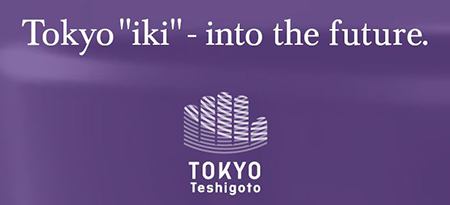Edo Shikki
(Lacquerware)

- Neither metal nor pottery, but lacquerware offers another option for tableware.
- In olden times, pottery was nicknamed "china", and Shikki (lacquerware) was popularly known as "japan". Japan has long been a world leader in lacquer ware production. Dozens of layers of manually applied lacquer create toughness and beautiful gloss finishes that can compete with those of pottery. The lacquer layering and wiping processes create a special texture featuring a woody flavor. Shikki has long been preferred by the average homeware buyer due to its characteristic of resistance to the pitting and distortion that can affect ordinary woodenware, as well as its high-level technical strength which enables shaping to create a variety of expressions on wooden wares. Shikki has good heat retention and thermal insulation properties, so it can keep hot dishes warm while still being cool and easy to hold, even with hot soup inside. Shikki has a soft touch that is comfortable to the hands, and it imparts pleasant taste without overpowering the flavors of foods and beverages. Unconstrained by tradition, as is the case with Shikki producers in other centers, Edo Shikki has developed into a maker of contemporary tableware for everyday use and has also been actively working on new designs. In addition to chopsticks and bowls, Edo Shikki produces Shikki accessories, including earrings for pierced ears, Kanzashi (ornamental hairpins), and miscellaneous items. The latest challenge has been producing Shikki that utilizes glass materials.
| Main Areas of Manufacture | Taito Ward, Chuo Ward, Adachi Ward |
|---|---|
| Designation/ Certification Date | February 4th, 1982 (Tokyo Certification) |
| Traditionally Used Raw Materials | Urushi (Japanese lacquer) is a natural material sourced from the sumac tree (scientific name: Toxicodendron vernicifluum). The following types of wood are used in the manufacture of Edo Shikki: Chestnut, Zelkova, Magnolia obovata, Cherry and Katsura. Other timbers with similar properties may also be used. |
Traditional Technologies and Techniques
- The base of Edo Shikki (lacquerware) is created using the following techniques: Kokuso*1 filler is applied to base woods. Nunokise*2 is the gluing of untreated linen to base woods. Sabitsuke involves applying a mixture of fresh lacquer and whetstone powder. Nakanuri*3 is the application of intermediate coats of lacquer. Togi is a burnishing process, etc.
- There are two major lacquering techniques. One is the "Roiro Finish." This involves the repeated application of layers once the previous layer of lacquer has been polished. The second is the "Nuritate Finish" (the "Standing Lacquer Finish"). This involves the application of lacquer directly by brush.
- Decoration involves processes such as Maki-e (gold reliefs), Raden (mother of pearl inlays) and Chinkin (sunken gold inlays).
History and Characteristics
Lacquered bowls and multi-tiered boxes have continued to be used in our day-to-day lives through the ages. In addition to being used every day, these items enliven special occasions such as the New Year and other celebrations via their appearance at mealtimes.
Even today, many households use lacquerware which has been passed down over successive generations.
Once lacquer is dried, lacquerware is not impacted by acidic or alkaline substances. It also possesses strong insulation properties with respect to heat and electricity.
Moreover, by not being just a coating material, lacquer works to prevent both staining and rotting of the base woods used in lacquerware. It also acts as a strong adhesive.
The lacquer tree (the sumac) is a deciduous variety whose leaves turn in color to refreshing hues before they shed in autumn. Sumac trees are described as being unique to Asia with a geographic distribution that includes Japan and China.
Until World War Two, good quality lacquer was gathered in Japan. Today, most of the lacquer used in production is imported from China.
A single piece of lacquerware passes through the hands of a number of craftsmen before completion. The process commences with the lacquer tree being "tapped" for its sap. Next a craftsman called a "Kijishi" (a wood turner) processes untreated wood and creates from it items such as bowls and multi-tiered boxes. These are then passed to a "Nurishi" (a lacquerer) who applies the lacquer. The lacquerware is finished once it has passed through the hands of a "Maki-e shi" (a decorator) who etches patterns as well as sprinkling gold and silver powder over the lacquerware.
The task of applying lacquer is a battle against time. In that there is the quick shift to applying the next coat of lacquer once the surface of the previous coat has dried; sometimes it means that under the surface of the previous coat there are areas not fully dried. Thus, special attention is paid when applying successive coats. Once lacquer on base wood is hardened, application of the undercoat, middle coat, and topcoat is continued as repetitious work involving lacquering and polishing, the task is one of perseverance.
It is said that the finer a piece of lacquerware, the more times it has been lacquered.
Overseas, as the long traditions of China in the production of ceramics led ceramics to be known as "china," in that lacquerware was known at one stage as "japan," the country has had a very long tradition of producing such products.
Contact Details
| Manufacturing Area Cooperative Name | Tokyo Lacquerware Cooperative Association |
|---|---|
| Address | 2-21-9 Midori, Sumida Ward, Tokyo 103-0021 |
| TEL | 03-5600-9401 |






